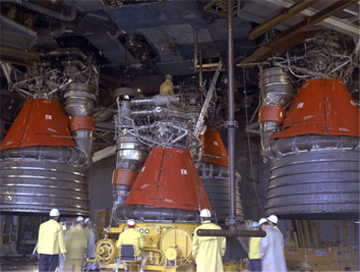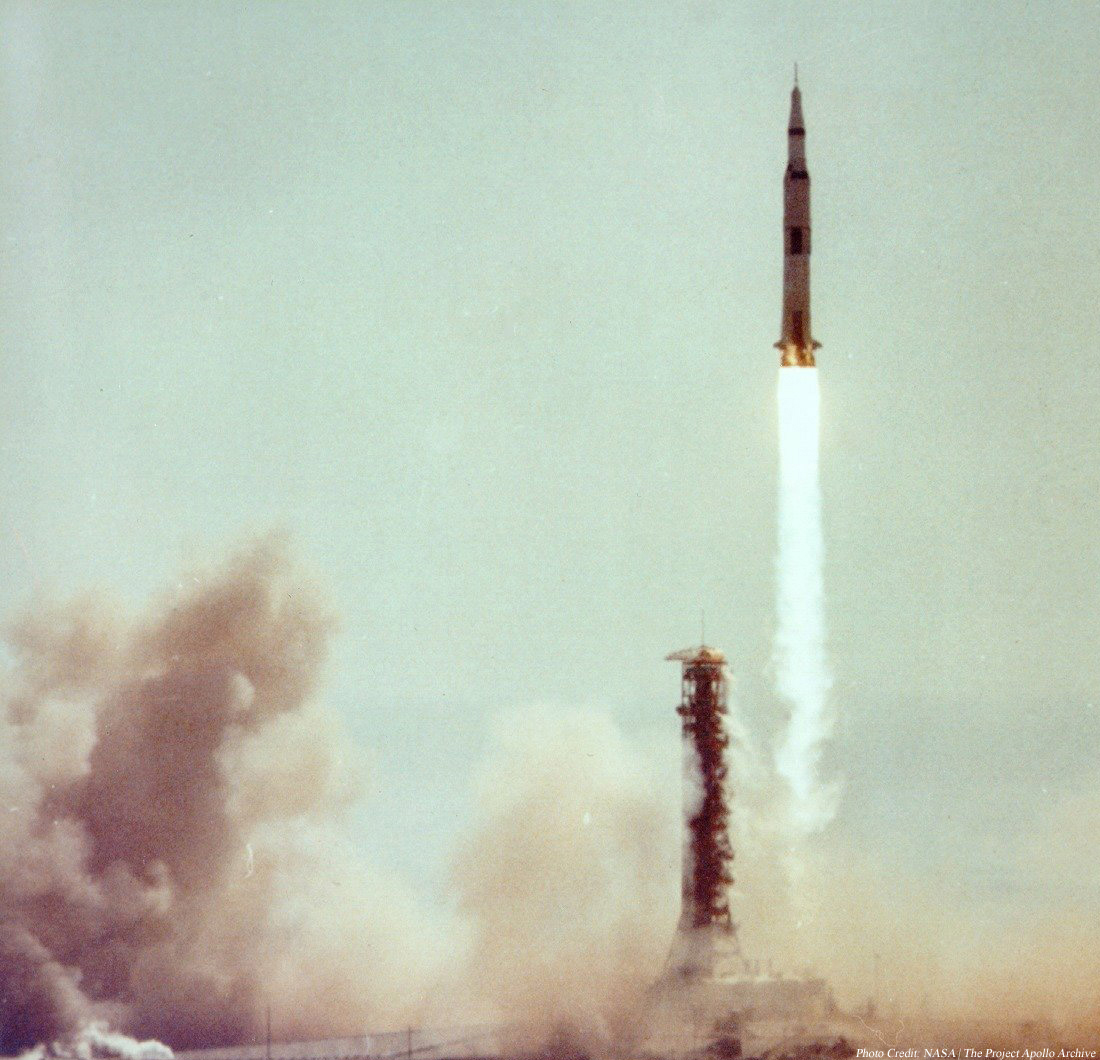By Bezos Expeditions, one of Jeff Bezos' projects along with Amazon.com and Blue Origin Aerospace (one of the NASA Commercial Crew companies.)

March 28, 2012
The F-1 rocket engine is still a modern wonder — one and a half million pounds of thrust, 32 million horsepower, and burning 6,000 pounds of rocket grade kerosene and liquid oxygen every second. On July 16, 1969, the world watched as five particular F-1 engines fired in concert, beginning the historic Apollo 11 mission. Those five F-1s burned for just a few minutes, and then plunged back to Earth into the Atlantic Ocean, just as NASA planned. A few days later, Neil Armstrong stepped onto the moon.
Millions of people were inspired by the Apollo Program. I was five years old when I watched Apollo 11 unfold on television, and without any doubt it was a big contributor to my passions for science, engineering, and exploration. A year or so ago, I started to wonder, with the right team of undersea pros, could we find and potentially recover the F-1 engines that started mankind's mission to the moon?
I'm excited to report that, using state-of-the-art deep sea sonar, the team has found the Apollo 11 engines lying 14,000 feet below the surface, and we're making plans to attempt to raise one or more of them from the ocean floor. We don't know yet what condition these engines might be in - they hit the ocean at high velocity and have been in salt water for more than 40 years. On the other hand, they're made of tough stuff, so we'll see.
Though they've been on the ocean floor for a long time, the engines remain the property of NASA. If we are able to recover one of these F-1 engines that started mankind on its first journey to another heavenly body, I imagine that NASA would decide to make it available to the Smithsonian for all to see. If we're able to raise more than one engine, I've asked NASA if they would consider making it available to the excellent Museum of Flight here in Seattle. (For clarity, I'll point out that no public funding will be used to attempt to raise the engines, as it's being undertaken privately.)
NASA is one of the few institutions I know that can inspire five-year-olds. It sure inspired me, and with this endeavor, maybe we can inspire a few more youth to invent and explore.
We'll keep you posted.
Sincerely,
Jeff Bezos
The F-1 rocket engine is still a modern wonder — one and a half million pounds of thrust, 32 million horsepower, and burning 6,000 pounds of rocket grade kerosene and liquid oxygen every second. On July 16, 1969, the world watched as five particular F-1 engines fired in concert, beginning the historic Apollo 11 mission. Those five F-1s burned for just a few minutes, and then plunged back to Earth into the Atlantic Ocean, just as NASA planned. A few days later, Neil Armstrong stepped onto the moon.
Millions of people were inspired by the Apollo Program. I was five years old when I watched Apollo 11 unfold on television, and without any doubt it was a big contributor to my passions for science, engineering, and exploration. A year or so ago, I started to wonder, with the right team of undersea pros, could we find and potentially recover the F-1 engines that started mankind's mission to the moon?
I'm excited to report that, using state-of-the-art deep sea sonar, the team has found the Apollo 11 engines lying 14,000 feet below the surface, and we're making plans to attempt to raise one or more of them from the ocean floor. We don't know yet what condition these engines might be in - they hit the ocean at high velocity and have been in salt water for more than 40 years. On the other hand, they're made of tough stuff, so we'll see.
Though they've been on the ocean floor for a long time, the engines remain the property of NASA. If we are able to recover one of these F-1 engines that started mankind on its first journey to another heavenly body, I imagine that NASA would decide to make it available to the Smithsonian for all to see. If we're able to raise more than one engine, I've asked NASA if they would consider making it available to the excellent Museum of Flight here in Seattle. (For clarity, I'll point out that no public funding will be used to attempt to raise the engines, as it's being undertaken privately.)
NASA is one of the few institutions I know that can inspire five-year-olds. It sure inspired me, and with this endeavor, maybe we can inspire a few more youth to invent and explore.
We'll keep you posted.
Sincerely,
Jeff Bezos




Comment